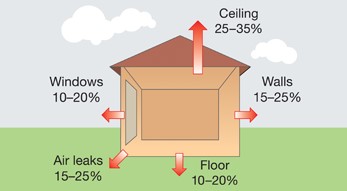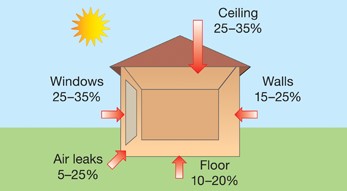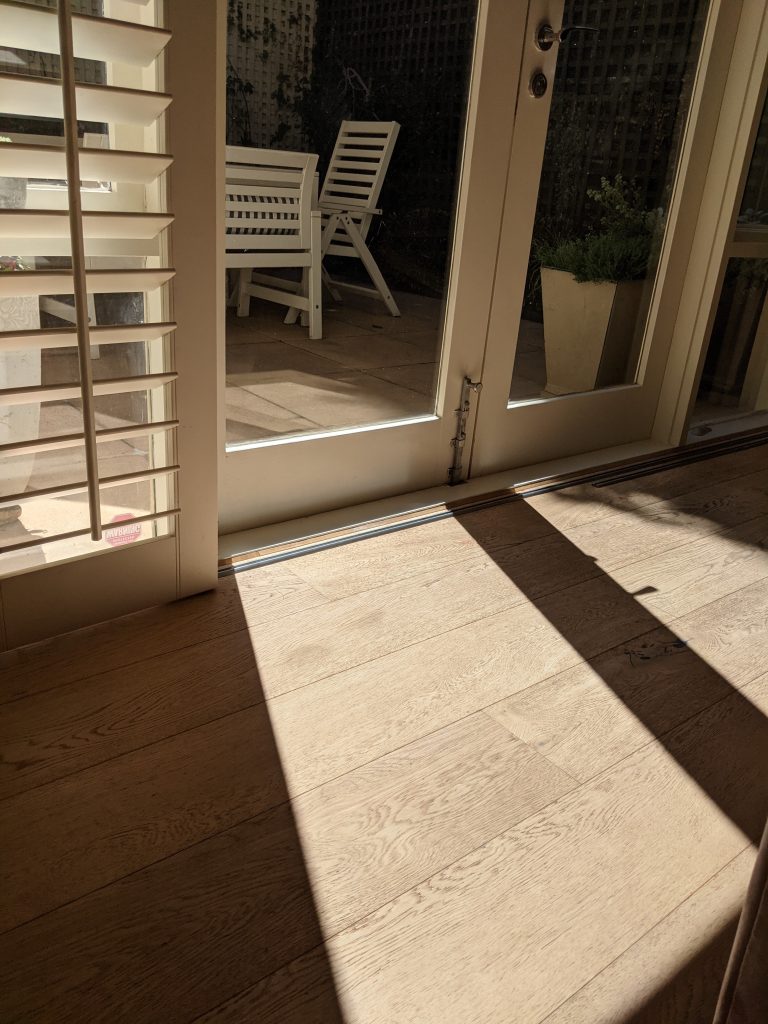
Heat Loss Causes & Choices
This BLOG discusses the causes and suggests steps to reduce house heat loss in winter and heat gain in summer.
The causes come from these 3 areas, broadly one third each:
- Ceilings
- Windows
- Walls, floors and general air leaks
Your choices to reduce unwanted heat loss and heat gain depend on whether you are:
- Building a new house
- Renovating an existing house
- Improving an existing house
- Your local climate
- Your budget
Insulation
Insulate Ceilings
For a new build, renovation or existing house, properly insulate your ceilings. This is the most cost-effective step you can take to reduce house heat loss in winter and heat gain in summer.
Install or add ceiling insulation to achieve a thermal resistance (R Rating) up to R6. For existing houses, add ceiling insulation to bring the R Rating up to R6.
Thermal Bridges
- Make sure your insulation is fitted snugly around framework because a bare ceiling makes a thermal bridge for heat transfer to/from the outside.
- Reduce the number of down lights because they require a bare ceiling around them. Therefore, this will reduce thermal bridging.
- A well-insulated ceiling significantly reduces rising heat loss in winter. It also reduces heat gain from the roof space in summer.
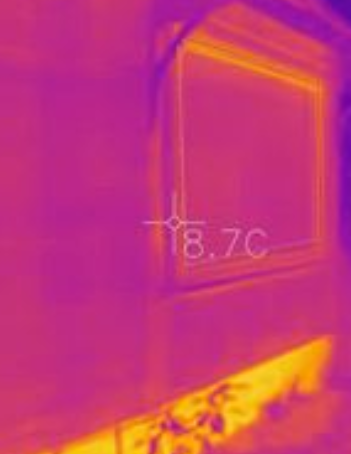
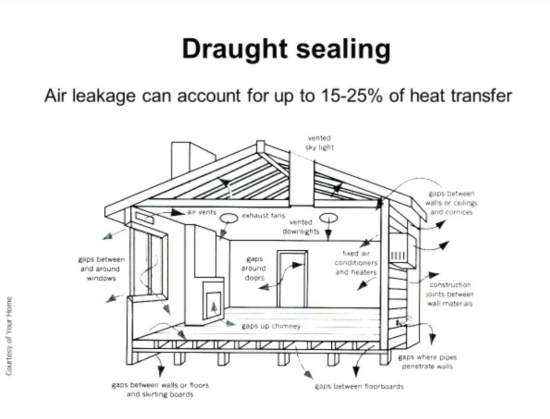
Insulate Floors
Concrete Slab
- Insulate the sides of your slab or this will cause a thermal bridge to the outside air. Consider a foam high-density closed-cell type with R rating of 2.
- Insulate underneath your slab with an R Rating of at least 1.
- Slab insulation is particularly important if you are hydronically heating your slab because the greater heat in your slab will cause greater heat flow to the colder air outside.
- If you choose a decorative screed layer over the structural slab, then this should be applied over insulating panels with an R Rating of at least 1.
- A screed layer is often used when installing underfloor hydronic heating and cooling circuits embedded in the screed layer. It can also be used as a decorative, polished floor layer.
Suspended Floors
Air is a good insulator but only if it doesn’t move by convection.
- Apply insulating material under your suspended floor. This is easier for new builds. However, it may not be feasible for some existing suspended floors. Consider carpets if underfloor insulation is not feasible, particularly in bedrooms.
Insulate Walls
Insulate your walls and block air leaks:
- Insulate your walls with an R rating of at least 2 to reduce heat transfer from radiation.
- Include a foil lining to reduce radiation.
Reduce Air Gaps
Blocking up air gaps around external doors and windows is one of the most cost-effective things you can do to reduce house heat loss and heat gain.
Here are some things you can do easily:
- Install weather strips on external doors and windows
- Install self-closing exhaust fans
- Make sure fire flues are closed when not in use
- Close windows when outside temperatures are significantly higher or lower than your indoor set temperatures, open them when more temperate
Read More
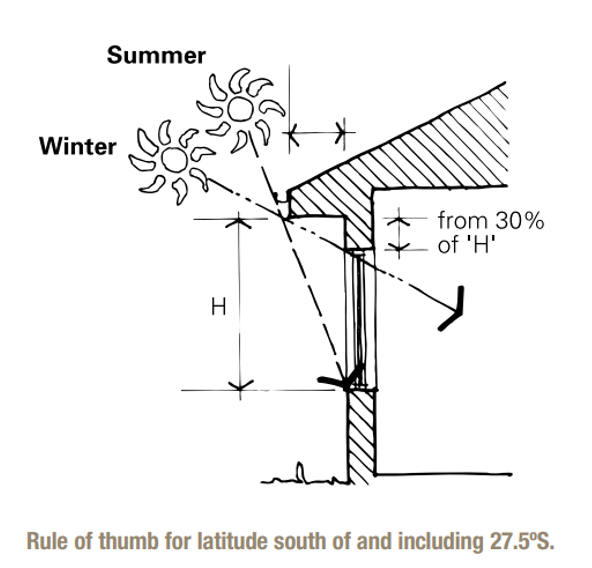
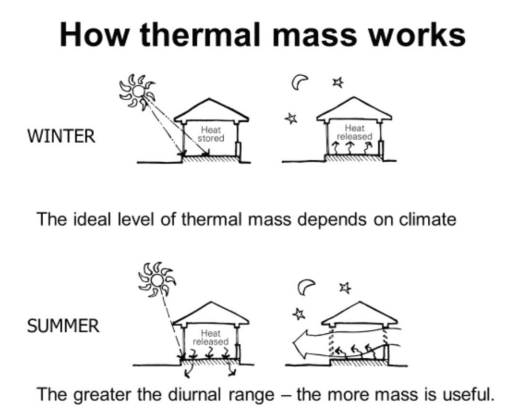
Windows
Reduce Heat loss & Heat Gain
Install double-glazed windows to reduce house heat loss in winter.
Install blinds or drapes with pelmets as a less expensive option or if you have lead light windows. This relies on maintaining an air gap between the window and its covering, hence the need for pelmets.
Shade your windows to reduce unwanted radiant heat gain in summer. Consider trees, vines, external awnings, glazing type or reflective film.
Apply window films to existing windows or choose high performance windows designed to reduce heat gain from direct radiation in summer.
Short wave radiation from the sun is high in energy and can pass through glass, even double and triple glazed glass. This is a good thing in winter but may be a problem in summer. Therefore, shade windows in summer but not in winter.
Radiation enters your house via windows in three ways:
- Beam – sunshine directly trained on windows.
- Diffuse – radiation scattered by molecules in the atmosphere, for example clouds.
- Reflected – radiation that bounces off an object, for example walls and paths.
Make pathways near windows less reflective. For example, choose gravel over concrete or make concrete less reflective. Increase the amount of grass and foliage near your windows.
Window Frames
Choose wooden window frames for aesthetics and also because they are weak conductors of heat. Therefore, they do not need to be thermal broken to prevent thermal bridging of heat between inside and outside.
However, keep in mind the issue of conductivity if you choose aluminium window frames. Make sure they are thermally broken to prevent heat bridging from inside to outside in winter and vice versa in summer.
Re-Radiation
The thermal mass inside your house will re-radiate energy in the evening. This is less powerful than direct sunshine because it is long-wave energy. Install double-glazed windows to effectively insulate against inside heat re-radiating outside in winter.
Feel this energy when you walk past a brick wall in the evening that has been exposed to the sun. That’s what you need in winter but not in summer.
You know that direct sunshine can burn you in summer. It can also burn you through a sunny window. And it makes no difference whether it is single or double -glazed.
This is the power of short-wave radiation. In fact, double-glazed windows may be a problem in summer because they don’t let your house cool down in the evening unless you open them. Therefore, external window shading is the best option for summer.

